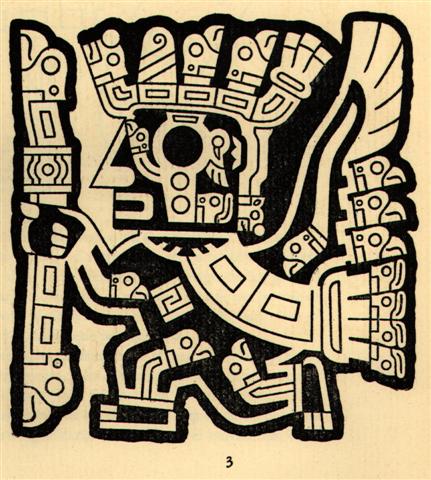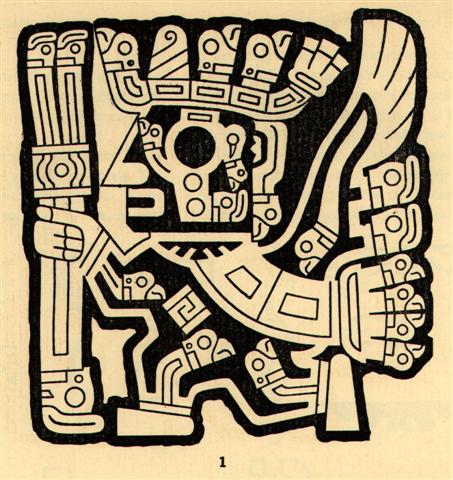|
TRANSLATIONS
Next page (with subpage):
The numbers are remarkably in harmony with the structure and with the glyphs. The basic reason must be that over the ages the 'fittest' structures survived, those which appeared to be in harmony with reality. The 7-day week has survived. Fierce competition could have been offered by a 5-day week (a natural choice becasue of the number of fingers). I suspect 5 = 'fire' derives from such an ancient 5-day week. 4 * 7 = 28, the number of light moons in the month. But they did not think 4 * 7, but 2 * 14, with the simpler operation 'doubling' instead of multiplication. The basic number in this moon system was the week. By the process of 'doubling' then was derived: 7, 14, 28, 56, 112, 224, etc. For the sun a slightly longer month with 30 days was envisioned. Half 30 is 15, equal to the number of the full moon night. In such a full moon night sun will be exactly opposite in the sky. Sun and moon are in this system opposites. I remember that Posnansky proposed a 5-day week to explain the triplet of 'daysigns' which adorns the Gateway of the Sun:
I have reordered them so that his number 3 comes first. The other two have split staffs and should come later. In view of the 58 incredibly dark nights at the beginning of everything, though, his number 2 should be the first daysign. We can see that is is a 'condor' (a 'god') - i.e. a supernatural being - and his crown is hidden by cause of his striving to get up. Instead of a bird hidden in his wing he has a fish. Also his legs are fishy. Day signs 3 and 1 are more human in appearance, and their crowns are visible. Number 3 has a puma head in front of his crown, a land creature. We should consider the possibility of a year which has 3 seasons. It does not mean sun has 3 'wives', he still has only 2, because sun is present only in day signs 3 and 1. In day sign 2 it is his 'spirit' which is visiting the underworld. 3 fingers is a common feature in these daysigns and in the rongorongo glyphs. 3 * 5 = 15, and 'upgraded' one level we get 3 * 50 = 150, half a greater solar month. We can understand that there are 24 half-months in a 360-day year, equal to 72 five-day weeks. 15 * 15 = 225 in this perspective is the 'square' formed by solar half-months. During the phase of waning moon we should turn to the sun instead. |
|||||||||||||||||||||||||||||||||||||||||||||||||||||||||||||










